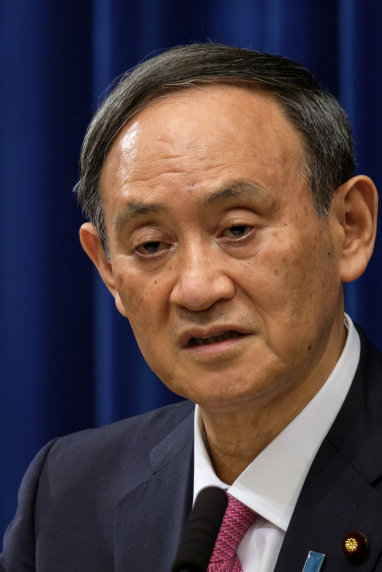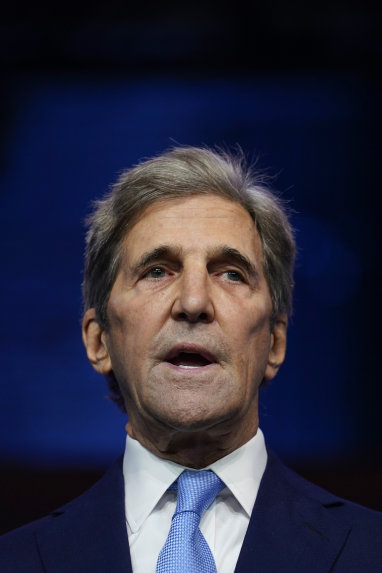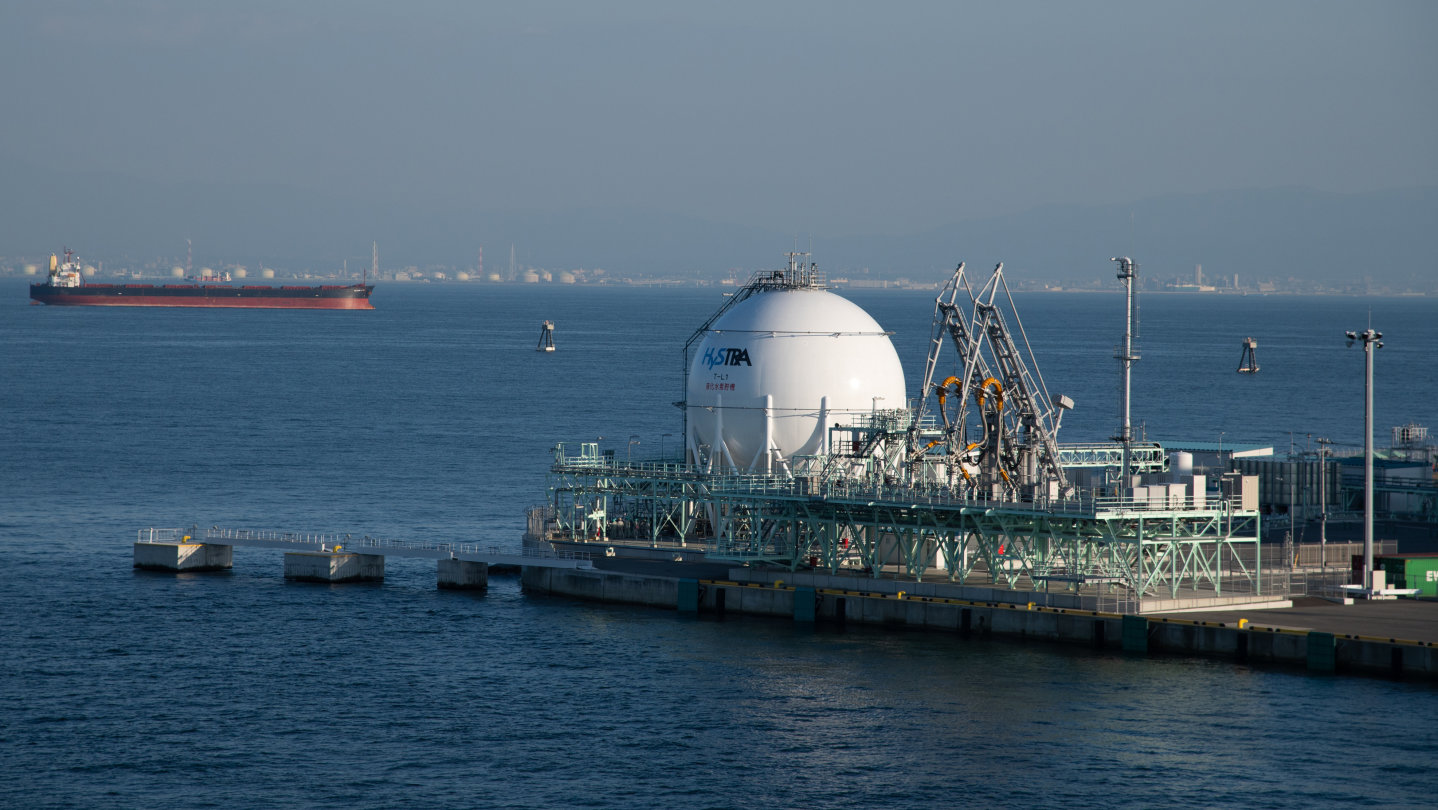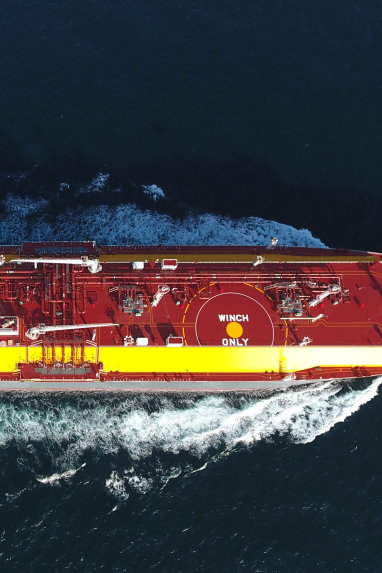Why Japan's net zero pledge is a colossal task
Geopolitical pressure for more urgent action to tackle climate change is intensifying but it faces inertia in Australia's largest thermal coal and gas customer – Japan.
Vast piles of Australian iron ore and coal surround the newest member of Japan's coal-fired power generation fleet in the industrial city of Kashima.
The plant's owner, J-Power, began generating here in the shadows of Nippon Steel's Kashima mill in July, just days after it switched on a second new, ultra supercritical coal-fired power plant at Takehara on the outskirts of Hiroshima.

J-Power's two new coal-power stations arrived within months of Japanese Prime Minister Yoshihide Suga committing the nation to net zero emissions by 2050, highlighting the mixed signals coming from the nation that ranks as the biggest buyer of Australian thermal coal and liquefied natural gas.
Suga is not alone: similar pledges within a few weeks from South Korea and China showed that despite the chaos of a global pandemic, the biggest buyers of Australian commodities are joining the global trend towards eradicating greenhouse gas emissions by the middle of this century, or 2060 in China's case.
Between them, South Korea, Japan and China – who since October have all committed to net zero targets by 2050 or 2060 – accounted for $75.6 billion of Australia's total $103 billion of exports of coal and gas last year.
The contradiction between these pledges and J-Power’s enthusiasm for new coal plants – mirrored in many parts of Asia – shows the huge obstacles to tackling global warming.
On one hand there is the growing global momentum: US President-elect Joe Biden and his global climate envoy – former secretary of state John Kerry – will add to the pressure for more urgent carbonisation already being brought to bear globally – and on Australia – by the European Union and Britain. Companies across the spectrum are adopting net zero targets, among them major resources producers including BHP and Woodside Petroleum; Australia’s biggest carbon emitter, AGL Energy; the world's biggest thermal coal producer, Glencore; utilities such as Telstra; and consumer companies from Apple to Nestle.
For Australia's big, export-dependent fossil fuel industries, the pathway to net zero by 2050 published by the International Energy Agency in 2020 makes alarming reading.
It implies dramatic changes in the energy mix of pledging nations, with changes expected to be clearly evident by 2030: global demand for thermal coal in 2030 will need to be 60 per cent lower than it was in 2019, taking the size of the global market back to where it was in the 1970s; global demand for oil will slump by 33 per cent over the same period; and gas demand will be 20 per cent lower than under existing policies.
''The speed of this reduction would risk large job losses in coal mining and coal-fired power stations,'' the IEA says.
Yet these are the changes scientists say are required to limit global temperature increases to “well below” 2 degrees Celsius – the level specified in the 2015 Paris treaty – and preferably below 1.5 degrees.
Cost and inertia
On the other hand, to the chagrin of climate campaigners, there are massive costs to the transition. Wood Mackenzie estimates that more than $US5 trillion of investments will be needed for China to reach its pathway for carbon neutrality by 2060, given the huge additional power generation needed to electrify huge swaths of the economy.
"It is definitely a colossal task for a country using 90 per cent hydrocarbons in its energy mix and annually producing more than 10 billion tonnes of CO²-e, and in addition, accounting for 28 per cent of global total emissions," says WoodMac's head of markets and transitions for Asia Pacific, Prakash Sharma.
For China to reach its goal, Wood Mackenzie estimates that solar, wind and storage capacities will have to increase 11 times to 5040 gigawatts by 2050 compared to 2020 levels. Coal-fired power capacity halves while gas ends at the same level as in 2019. Total power output expands nearly 2.5 times to 18,835 terawatt-hours by 2050.
There's also endemic inertia. In the five years since the pact was signed, global emissions have kept rising and the world’s second-biggest emitter, the United States, withdrew entirely under President Donald Trump.

Some Asian countries have also continued approving new coal-fired power stations. "If history is any guide, the 170 gigawatts of new coal (fired power) that reached final investment decision in developing Asia since 2015 – roughly the size of Brazil’s total power complex – could stay online until well after 2050,'' BHP's Lee Levkowitz warned in October.
Across India and south-east Asia, the average coal-fired power plant is less than 10 years old. China alarmed climate campaigners with a surge in new coal-fired power station approvals in early 2020.
BHP’s hard-nosed "central energy scenario" – the one the mining giant believes the world is most likely to follow – projects global consumption of both coal and gas will be higher in 2050 than it was in 2020, leading to temperature rises well above 2 degrees Celsius.
This means J-Power's new Kashima and Takehara power stations will still be burning Australian coal long after 2050 – if they haven’t become "stranded assets" whose lives have been cut short by an urgent push to cut emissions.
Indeed, the forecasts tend to be harsher than the current reality for Australian exporters, who sell into the Asian markets that look set to tolerate fossil fuels for decades longer than developed markets such as Europe and North America. If you speak to the biggest buyers of Australian thermal coal and LNG, they're not planning for reductions in consumption anywhere near the scale the IEA says is necessary.
Japan’s conundrum
Japan is a hard case. Land is too scarce and expensive for solar and wind power, most nuclear power remains off line since the 2011 Fukujima disaster, and the nation uses the highest share of fossil fuel of any rich nation. Decarbonisation of the electricity system without reviving nuclear – which would spark fierce public opposition – is more challenging than in places such as India, where solar power is thriving and cheap, says Tim Buckley, of the not-for-profit Institute for Energy Economics and Financial Analysis.
''Japan imports the vast majority of its energy needs, and is heavily reliant on imported coal and LNG,'' he says in a reference to options such as offshore wind. "To get to net zero emissions by 2050, they will have to invest aggressively in new technology development."
JERA, which ranks as the biggest power generator in Japan, the world's biggest buyer of LNG and a major thermal coal buyer, plans to proceed slowly.
JERA joined Suga in vowing to achieve net zero emissions by 2050, and the first big step in its plan will be to close its ''inefficient'' older coal-fired power stations by 2030.
That commits JERA to curtailing 1.4 gigawatts, or just over 13 per cent, of its existing coal-fired generation capacity by 2030 – a far cry from the 60 per cent cut the IEA suggests.
JERA's plans suggest the heavy lifting of reducing coal-fired emissions will occur between 2035 and 2050, with ammonia slated to play a significant role.

JERA wants 20 per cent of its coal-fired generation to be "co-fired" with ammonia by 2035, and by 2050 it wants ammonia to entirely replace coal as the fuel.
''This looks extremely ambitious and technologically and commercially unproven at this stage. But it shows the magnitude of change likely to occur in the quest to drive to 100 per cent decarbonisation,'' says IEEFA's Buckley.
Countries such as the Netherlands may be ordering coal-fired power stations to close by 2030 – including one built as recently as 2015 – but Japan is in no rush.
Asked by AFR Weekend how many years it expected to run its new Kashima and Takehara power stations, J-Power was clear, if imprecise.
''We recognise that (ultra super-critical technology) will continue to be necessary in the government policy, and we will continue to operate for a long period of time, although we have not set a clear deadline,'' a J-Power spokesman says.
J-Power notes that it is emissions from coal, rather than coal itself, that Japan has pledged to eradicate by 2050.
''Prime Minister Suga has announced that he will work on zero emissions with all power sources including coal-fired power to realise carbon neutrality in 2050, and we will work on zero emissions of fossil power sources by putting [integrated gasification combined cycle and carbon capture utilisation and storage] into practical use,'' the spokesman says. Integrated gasification combined cycle technology emits about a fifth less CO² than older coal plants; carbon capture and storage aims to deal with remaining emissions.
JERA's plan to have net zero emissions by 2050 assumes it will still be a major importer of LNG in 2050.
The company expects abatement technologies to ensure its LNG can be free of emissions and was one of the first worldwide to deliver carbon-neutral LNG, shipping a cargo from Abu Dhabi in mid-2019, with offsets sourced from renewables projects in India, the end market.
''By 2050, carbon dioxide emitted from power plants using fossil fuels is offset using offset technology or by carbon dioxide-free LNG,'' JERA says in its 2050 plan.
Australian LNG exporters Woodside Petroleum and Santos are both exploring carbon-neutral LNG, but there's more talk than action so far, perhaps because of the estimated $US2.5 million extra cost for an emissions-free cargo.

Longer term, the prize of green hydrogen exports beckons as a natural replacement for LNG.
Both companies are investing in offsets as they seek to compensate for emissions still remaining after efforts to avoid and reduce via technologies such as carbon capture and storage.
"We need to pull all levers to make it work," says Mehdi Chennoufi, general manager LNG supply and trading for the East of Suez region at Shell, one of the first movers in supplying carbon-neutral LNG, including a cargo from Gladstone.
Total of France has delivered a cargo from Australia to China.
Tipping point?
Despite the sobering history, geopolitical momentum is intensifying and the possibility of acceleration towards a tipping point in global efforts to tackle climate change – on the back of government policy and technological disruption – can’t be ruled out. The COVID-19 pandemic has boosted the pursuit of cleaner energy as governments around the world look to "build back better". Funds are being unleashed not just for renewable energy but for hydrogen, carbon capture and storage and green steel.
The US will rejoin the Paris treaty under Joe Biden. Britain will no longer support new international projects in oil, natural gas or thermal coal. In the past year, 63 per cent of the globe – including Britain, China, Japan and South Korea – have vowed to reach net zero emissions by mid-century. At the Climate Ambition Summit held on the fifth anniversary of the Paris treaty in December, China and the European Union joined Britain to flesh out plans for steep cuts in carbon emissions by 2030, adding to pressure on the Morrison government to step up its targets and make “bold” climate ahead of the 2021 Glasgow Conference of the Parties (COP26) summit.
In September, France’s business promotion agency chief, Christophe Lecourtier, urged Australia to adopt the net zero goal, warning that the free trade deal now being negotiated with the 28-nation European bloc must affirm urgent ambition to addressing the global climate crisis. Britain's climate envoy – former Bank of England boss Mark Carney – and former prime minister Malcolm Turnbull also warned the EU’s resolve to levy carbon taxes on imports – including those made with Australian raw materials – was strengthening.
Citi's head of ESG research, Zoe Whitton, asks if Australia risks being ambushed by a tightening circle of the EU, US and north Asian countries pledged to net zero if it doesn't speed up its own transition and its exports become increasingly uncompetitive because of their carbon intensity. She sees an "arms race" as economies around the world reposition themselves for the disruption.
"We really need to be thinking about how we position ourselves for that race and for that kind of competitive repositioning that is that is going on globally," Whitton told the Australian Financial Review Energy & Climate Summit in November.
Australia current target – for a modest 26-28 per cent reduction in emissions by 2030 from a high 2005 base and a vague aim to reach net zero in the second half of the century – falls short. The electricity sector is speeding past that target but efforts to rein in industrial emissions are the "missing piece" in the policy framework, says Hugh Grossman, executive director at energy and environmental markets advisory RepuTex.
"Companies all want industrial emissions addressed so they can work towards that net zero target, because ultimately the longer we leave it the higher the cost," Grossman says.
Some Asian nations that previously shaped as robust growth markets for thermal coal are wavering. Pakistani Prime Minister Imran Khan said in December his government would not approve new coal-fired power stations and had already scrapped two proposals, the Philippines put a moratorium on new coal power approvals – those already approved can still be built – and India has sharply reduced its new coal plans. Vietnam’s soon to be released “power plan 8" will be closely watched to see if Vietnam continues to be the coal bull of south-east Asia.
Still, Australian coal miners, with their proximity to coal's last growth markets in Asia and higher than average coal quality, continue to consider expansion even as global coal demand is projected to fall.

Glencore boss Ivan Glasenberg assured reporters that December's pledge to reach net zero emissions by 2050 did not mean ending coal mining. Mr Glasenberg says Glencore's Colombian coal mines would exhaust their geological resources by 2032 and its South African coal mines soon after, leaving its Australian coal mines with fewer competitors. "We will not be leaving coal in the ground ... by 2050 we will have certain coal reserves left which we can still be producing there,'' he says.
Mines are constantly being depleted, and replacing them has never been harder. Even if demand falls, supply might fall quicker as old mines are retired.
Whitehaven Coal's proposal to build a 25-year mine at Vickery in NSW, producing the sort of high-energy thermal coal desired by ultra supercritical plants such as those at Kashima and Takehara, looms as both a litmus test for future investment in thermal coal mining and an emblem of the uneasy tension in Australia’s energy policies.
The NSW government has given Whitehaven permission to go ahead with Vickery if the company chooses to make the $700 million investment. But it also expects thermal coal to be ''phased out'' of the world's energy mix and has laid out its own aggressive vision to tempt private money to build 12 gigawatts of new renewable generation and 2 gigawatts of energy storage in NSW by 2030.
''Many countries around the world have begun a transition away from fossil fuels to low carbon sources of energy to meet commitments under the Paris Agreement. This will ultimately lead to the global phasing out of coal in electricity generation (thermal coal), but will take some decades to complete,'' the NSW government in its Future of Coal Statement published in June said.
The speed of that phase-out will determine if these investments make a commercial return or are left stranded.
No comments:
Post a Comment